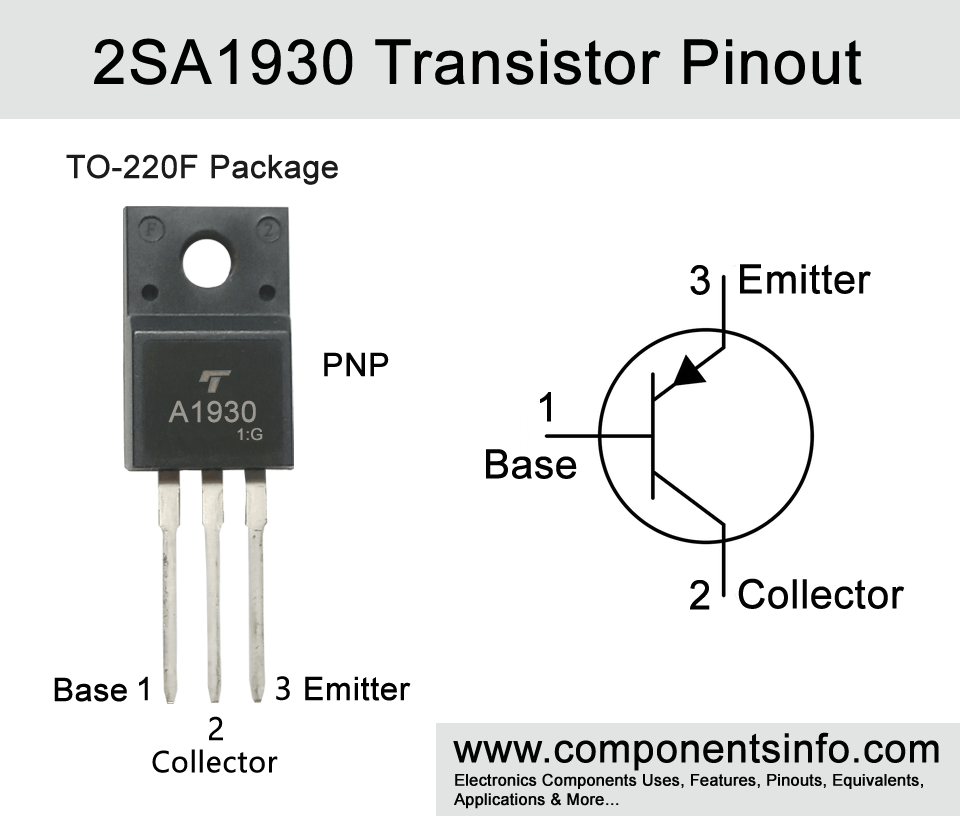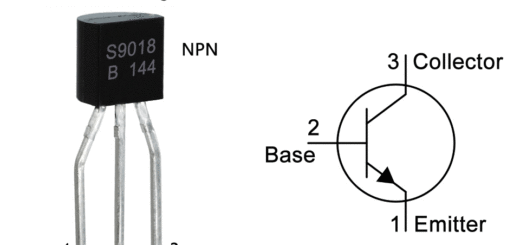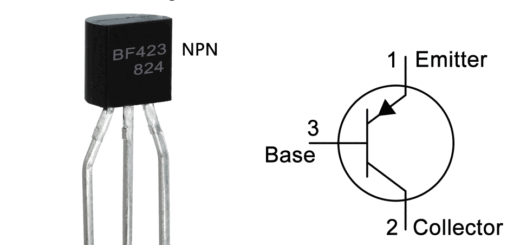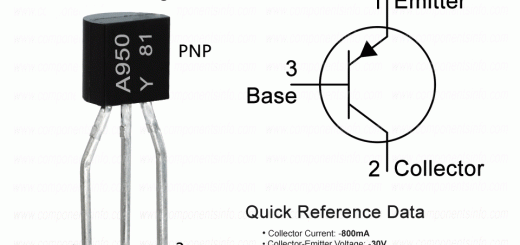2SA1930 Or A1930 Transistor Pinout, Applications, Equivalents, Features and Other Useful Info
A1930 or 2SA1930 is a TO-220F package PNP transistor, in this post we will learn about 2sa1930. transistor pinout, applications, equivalents, features and other useful info.
Absolute Maximum Ratings:
- Package Type: TO-220F
- Transistor Type: PNP
- Max Collector Current(IC): –2A
- Max Collector-Emitter Voltage (VCE): –180V
- Max Collector-Base Voltage (VCB): –180V
- Max Emitter-Base Voltage (VEBO): –5V
- Collector Power Dissipation (Pc): 2W
- Transition Frequency (fT): 200 MHz
- DC Current Gain (hFE): 130 to 330
- Max Storage & Operating temperature Should Be: -55 to +150 Centigrade.
NPN Complementary:
NPN Complimentary of 2SA1930 is 2SC5171
Replacement and Equivalent:
MJE5851, MJE5850
2SA1930 Transistor Explained / Description:
2SA1930 is a PNP transistor available in TO-220F package. The transistor is designed to be used in driving stage of amplifier applications and power amplification. Moreover, it has many good features such as collector-emitter voltage of upto -180V, transition frequency of upto 200MHz, DC current gain of 100 to 320, availability of complimentary transistor and collector power dissipation of 20W.
Now looking at the absolute maximum ratings of the transistor the collector current (continuous) is -2A, collector-emitter voltage is -180V, emitter-base voltage is -5V, collector-base voltage is -180V, base-current (continuous) is -1A, collector power dissipation is 20W and junction and storage temperature is from -55°C to +150°C.
Although the transistor designed to be used in audio amplifier applications but due to its good characteristics it can also be used in other applications such as radio frequency, switching, controlling, power circuits, high voltage circuits etc. The detailed list of its applications can be found under the “Applications” heading below.
How to Use Transistor:
Here is a simple guide on how to use transistor:
To use it as a switch connect its emitter pin with the negative rail of the circuit apply signals from which you want to control the output load to its base pin through a suitable current limiting resistor and connect the load between the collector pin and the positive rail of the circuit.
To use it as an amplifier provide signals that you want to amplify to its base through a suitable electrolytic capacitor normally 1uF to 10uF capacitor is used connect its emitter pin with the negative rail of the circuit and drive the speaker with the collector and use an electrolytic capacitor of same value as you use before between the collector and speaker pin and the other wire of the speaker will be connected with the positive rail of the circuit.
Applications:
Switching Circuits
Battery Charger Circuits
Automotive Circuits
Tx and Rx Circuits
Audio Amplifier Stages
Darlington Pairs
Audio Preamplifier Circuits
Audio Amplifier Circuits
Signal Amplification
Safe Operating Guidelines:
Safe operating guidelines for the transistor.
- Do not use the transistor to its absolute maximum ratings and always stay at least 20% below from its absolute maximum ratings.
- The maximum continuous collector current is -2A so according to the above 20% below usage guideline we will not use more than -1.6A.
- The maximum collector-emitter voltage is -180V but according to the above guideline we will not use more than 44V.
- The operating and junction temperature should be between -55°C to 150°C.
Datasheet:
To download the datasheet just copy and paste the below link in your browser.
https://www.mouser.com/datasheet/2/408/7654-58852.pdf



